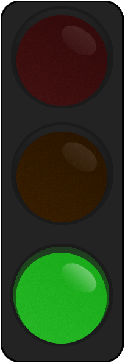It's August once again, and thus we're taking thing back to school - the old school, that is. That's right, this month I'm focusing on manga that was created (for the most part) before you and I were even born. Of course, if I'm going back to the beginnings of manga itself, we simply HAVE to review a work from the God of Manga himself.
PRINCESS KNIGHT (Ribon no Kishi), by Osamu Tezuka. First published in 1953, and first published in North America in 2001.
PLOT:
In Heaven, the angels decide which children will get a boy's heart or a girl's heart. One mischevious angel named Puck accidentally gives one child both types of hearts, and this child is born on Earth as the Princess Sapphire. This should give great joy to her parents, but the rule of the kingdom is that only male heirs can inherit the throne, and the wicked Duke Duralumin is waiting for any chance to stick his weak, hapless son Plastic on the throne. To protect the throne and the kingdom, Sapphire's parents decide to raise her as a boy.
Over a decade later, Sapphire appears to all the world as a daring and swashbuckling young man. She begins to feel conflicted over her gender after a chance encounter with the handsome Prince Franz Charming at a costume ball. Things only get worse when Sapphire's true sex is revealed and she and her mother end up on the run from the Duke's forces. Along the way Sapphire suffers from imprisonment, demons, angels, swordfights, witches, pirates, and more on her quest to regain her rightful throne.
STORY:
If there is one word that best describes Princess Knight, it's 'relentless.' The plot never seems to stop to take a breath, always leaping from from one situation to the next. What's truly amazing is that in spite of this, the end result is still very compelling.
The story is simply told, but it's always pushing forward, always pitting poor Sapphire against some new foe or force with little to no time to ponder her situation. While it keeps the story from spinning its wheels, it also wouldn't have hurt it to have a few quiet moments in between all those action beats, lest the reader suffer a vicarious sort of exhaustion. This is also a very moral simple story, where the good side is very, very good and the bad side is very, very bad and if anyone changes at all it's simply shifting allegiance from one side to the other. This isn't necessarily a bad thing - after all, this is meant to be like a fairy tale. Indeed, it's so much like a fairy tale that it blatantly cribs plot points from real fairy tales like Cinderella and Swan Lake.
Now, I'm not going to pretend that there's isn't some degree of sexism on display here. We are dealing with a story written in both the 1950s and Japan, and neither time nor place are bastions of liberal feminist thought. When Sapphire loses her boy's heart, she is weak and defenseless; when she loses her girl's heart, she is violent and callow. It is only when she has both that she is at her most balanced, able to love and care but also to take action and fight.
An interesting bit of subtext to this story is the running theme about children and the expectations their parents place on them. Sapphire suffers from having to hide her true identity for the sake of a kingdom. Plastic clearly has no interest or capability to rule the kingdom his father so desperately covets. Hecate, the child of the demon that wants to capture Sapphire's girl heart, has no interest in becoming more feminine and playing a role in her mother's schemes, wanting only to be a merry little prankster. All of these characters are troubled, to varying degrees, because their parents want them to play roles that they were not meant to play, and it's those troubles (Sapphire's mostly) that drive the story forward. It's interesting to see relatively subtle themes like this in what is otherwise a very simple, black and white, action driven story, and it really speaks to what a good writer Tezuka could be, even in these early days of his career.
ART:
It is a well-known fact that Tezuka was heavily influenced by the works of Walt Disney, and rarely is that influence more obvious than in the art for Princess Knight. The character designs are simple and cartoony, as typical for Tezuka, but there's something about the glitteriness of their eyes or the goofiness of the villains that is highly reminiscent of Disney shorts from the 1930s and 1940s. Even weirder, the demon witch mentioned before bears a striking resemblance to Sleeping Beauty's Maleficent, even transforming into a dragon at one point, despite the fact that this was released 6 years before Sleeping Beauty was released.
While the page composition is fairly standard, Tezuka does use a lot of larger panels and dramatic angles and the overall look is very clean and polished. There's a sort of grandness to the backgrounds, as while they are not overly ornate they are well detailed and convey a great sense of vastness and scale.
It may take new readers some time to adjust to Tezuka's comparatively cartoony art style, but beneath that simplicity will find some well drawn and thought-out artwork.
PRESENTATION:
Nothing to see here.
RATING:
This is a true classic of the manga world, much like the fairy tales it emulates. It's a must-have for Tezuka fans, and a great introduction for those new to his works.
This series was previous released by Kodansha, and has been reissued by Vertical. The bilingual Kodansha release is out of print. The series is complete in two omnibuses by Vertical, and is currently in print.
You can purchase this volume and many more like it through RightStuf.com!

No comments:
Post a Comment